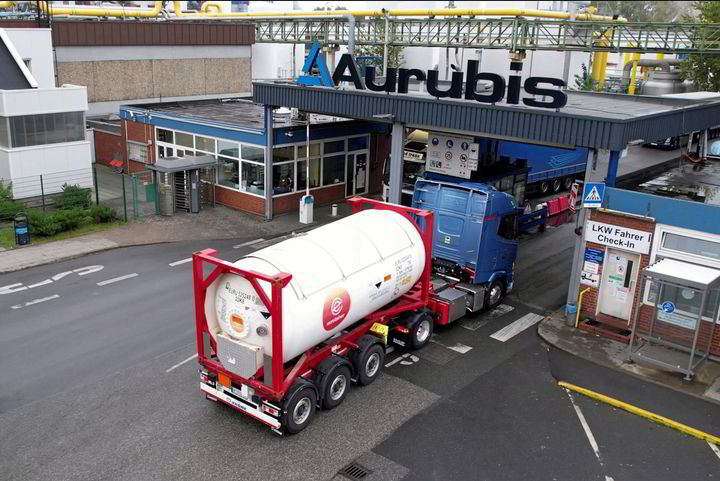Can ammonia be used directly instead of hydrogen in industrial heat applications? Trial suggests answer is ‘no’

German metals firm Aurubis has tested co-firing ammonia with natural gas to process copper into wire rods — and found it is unfeasible due to high nitrogen oxide (NOx) emissions and reduced quality of the end product.
While CEO Roland Harings noted that “from a technical standpoint, we are capable of using this energy source as an admixture on an industrial scale” to produce the required temperatures of more than 1,100°C, but that it would not do so again.
The idea behind burning ammonia directly was due to the facts that green hydrogen is likely to be imported into Germany in the form of NH3, and that a large amount of energy — and therefore cost — is needed to “crack” the ammonia to extract the H2.
But because the test proved to be a failure, Aurubis said it would indeed seek to crack NH3 back to H2 for future co-firing.
A spokesperson for Aurubis confirmed to Hydrogen Insight that burning ammonia resulted in substantial amounts of NOx emissions. And while the company was able to reduce these emissions, they were still “multiples of today’s very low emissions”.
Article continues below the advert
“The oxygen content of the copper rod is an important quality criterion,” the spokesperson continued, noting that the co-firing ammonia with fossil gas compromised this aspect of quality.
Aurubis had received the NH3 — produced from fossil gas with CO2 emissions captured and stored — for the trial from the UAE’s national oil company Adnoc in September 2022.
And the German metals company has confirmed it will continue a strategic cooperation with the oil and gas firm — but with an eye to cracking ammonia back to hydrogen.
“In hydrogen-derivative ammonia and in hydrogen itself, we see great opportunities for saving natural gas and as such avoiding CO2 emissions,” Harings said.
Aurubis has already invested €40m ($42.7m) into “hydrogen-ready” copper anode furnaces, having originally tested firing H2 instead of fossil gas in 2021.
The company is also considering investment into an ammonia-to-hydrogen cracking unit.
Ammonia is widely considered the most viable route to ship low-cost hydrogen around the world, owing to NH3’s higher energy density by volume, and relative ease of transport. Ammonia has been shipped internationally for decades ((although not across oceans) and NH3 terminals already existed in several countries.
But directly using ammonia for uses beyond the existing NH3 market — mainly chemicals and fertiliser production — is still relatively unproven, with the results from Aurubis’ trial likely to close the door on this avenue of direct use.





